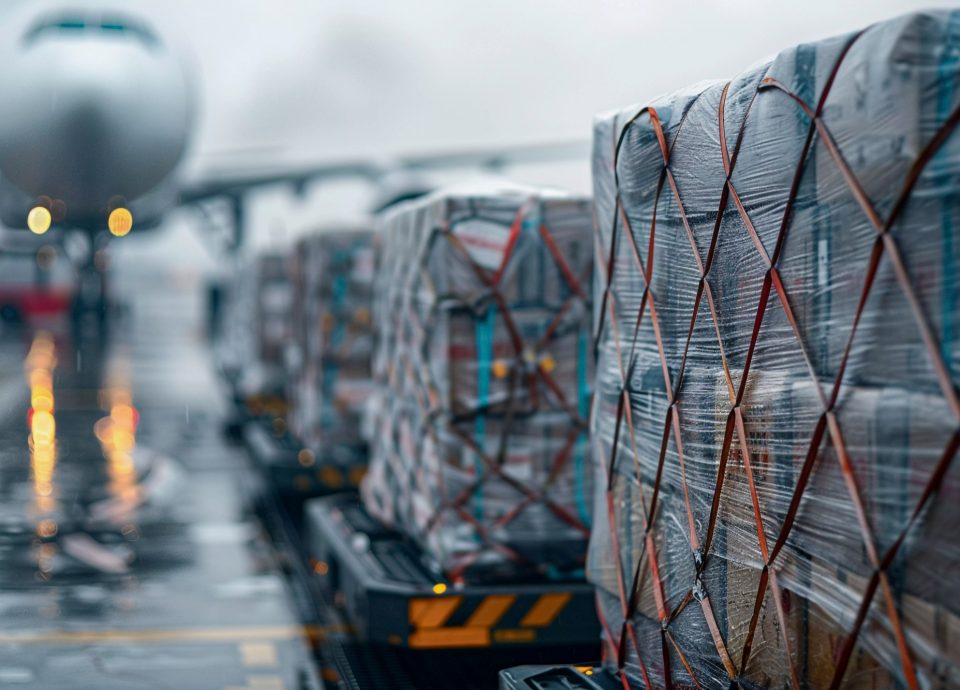There are moments in business when speed is the only strategy that makes sense. A production line is minutes from shutting down, hospital staff are waiting on a device for a patient, or a flagship retail launch hinges on inventory arriving before the weekend. In each of these scenarios, air freight delivery can turn a looming crisis into a win. By compressing transit times from weeks to hours, reducing touchpoints, and operating within highly controlled environments, air freight delivery gives operations leaders the one thing they can’t buy elsewhere: dependable speed.
This guide explains exactly when air cargo delivery is the right call, how to evaluate the tradeoffs, and what to expect from end to end. It’s written on behalf of Sprinter Emergency Transport Inc., a team that specializes in urgent, complex, cross-border moves where every milestone matters. You’ll find a step-by-step view of air freight delivery, a decision framework you can apply today, and pragmatic tips to make each shipment faster, safer, and easier to manage.
What Air Freight Delivery Really Means
Air freight delivery is the movement of commercial goods by aircraft—either in the belly of passenger flights or on dedicated freighters—supported by specialized security screening, airline handling, customs processes, and tightly choreographed first- and last-mile trucking. Compared with slower modes, air cargo delivery reduces the number of handoffs, shortens time in transit, and keeps freight inside secure, controlled zones for more of the journey.
Core advantages of air freight delivery
- Time compression: Intercontinental delivery in 24–96 hours.
- Predictability: Multiple daily departures through major hubs.
- Security: Fewer touches and screened cargo in restricted areas.
- Global reach: Access to landlocked or infrastructure-challenged regions.
Passenger belly vs. freighter
-
Passenger belly capacity is ideal for frequent, smaller consignments that need predictable schedules.
-
Freighters offer main-deck doors, higher volumetric capacity, and options for outsized cargo, secure compartments, or active temperature-controlled containers—perfect when air freight delivery must balance size with speed.
A Step-by-Step Look at Air Freight Delivery
Understanding the flow prevents surprises and keeps stakeholders aligned.
Step 1: Planning and capacity booking
Your provider confirms the service level (next-flight-out, standard, or charter), reserves space, and lines up alternates in case of disruption. With air cargo delivery, planning early unlocks better routings and resilient schedules.
What to confirm up front
- Dimensions, weight, and packaging (to calculate chargeable weight)
- Temperature or dangerous goods requirements
- Required delivery window and acceptable alternates
- Incoterms and who pays duties/taxes
Step 2: Packaging, labeling, and pickup
Lightweight, protective packaging is essential for air freight delivery. Use internal blocking/bracing, corner protection, and clear handling icons. A secure vehicle collects the freight and tenders it to the airline terminal.
Step 3: Documentation that keeps air moving
Accurate paperwork is the backbone of air freight delivery. You’ll need an Air Waybill (AWB), commercial invoice, packing list, and any permits/certificates. Misaligned values, HS codes, or piece counts cause preventable delays.
Step 4: Security screening and build-up
In Canada, all cargo for air must comply with Transport Canada’s Air Cargo Security Program. Screening readiness (proper packaging, accessible freight) prevents bottlenecks. After screening, cargo is built onto pallets or loaded into ULDs, a critical step in reliable air freight delivery.
Step 5: Uplift and linehaul flight
Once loaded, your goods fly to the destination hub or direct airport. Real-time scans—received, screened, built, departed—provide visibility that makes air freight delivery auditable and predictable.
Step 6: Arrival and customs clearance
Upon landing, the shipment posts arrival scans and proceeds to customs. Pre-filed entries and clean data accelerate this stage—the difference between an on-time air cargo delivery and a day-late one.
Step 7: Recovery, final mile, and POD
After release, the freight is recovered from the airline warehouse, scheduled for bonded cartage or delivery, and accompanied to POD (proof of delivery). For high-value shipments, white-glove delivery and appointment control protect the final steps of air freight delivery.
When to Choose Air Freight Delivery: A Practical Decision Framework
Air freight delivery is the right tool when time and control are the drivers of value. Use this simple framework to evaluate:
Time sensitivity
If a day of delay triggers lost revenue, penalties, or product obsolescence, air freight delivery is a smart hedge. Examples include line-down manufacturing, clinical shipments, product launches, and event-driven inventory.
Value density and shrink risk
Small, expensive, or targeted items (chips, optics, luxury goods, prototypes) benefit from air freight delivery because fewer touches and secure facilities reduce theft and damage risk.
Environmental or stability requirements
Cold-chain pharmaceuticals, temperature-sensitive reagents, and calibrated medical devices often require the speed and controlled handling that air freight delivery provides.
Network constraints
Shipments to remote, landlocked, or disruption-prone areas may only be feasible on schedule via air freight delivery, especially when ocean or ground networks are congested or compromised.
Mission-Critical Use Cases for Air Freight Delivery
Healthcare and life sciences
Tight stability windows, GDP handling, and chain-of-custody make air cargo delivery indispensable for many therapies and diagnostics.
Industrial and MRO spares
For a plant, facility, or aircraft on ground (AOG), a missed part can cost thousands per hour. Air freight delivery is the cheapest “expensive” option when measured against downtime.
Retail drops and seasonal launches
Marketing calendars don’t move. Air freight delivery preserves launch dates, store openings, and event timetables when delays elsewhere would sink ROI.
High-value tech and luxury goods
Electronics, semiconductors, and luxury retail benefit from secure dwell, fewer handoffs, and route predictability—key strengths of air freight delivery.
The Economics: Why Paying for Speed Often Saves Money
A per-kilo rate tells only part of the story. Think in terms of total landed cost and time value.
- Inventory carrying cost: Faster air freight delivery shortens cash-to-cash cycles.
- Penalty avoidance: Meeting SLAs and preventing line-down events dwarfs rate deltas.
- Shrink and damage reduction: Fewer touches and secure handling preserve full-value saleability.
- Revenue timing: Air freight delivery helps you invoice sooner, improving cash flow and customer satisfaction.
A shipment that costs $2,000 more by air but prevents a $25,000 penalty or preserves a multimillion-dollar launch is a clear, rational tradeoff.
Compliance and Security for Air Freight Delivery in Canada
Air freight delivery operates under robust rules to keep cargo safe and trade compliant.
- Transport Canada – Air Cargo Security Program (screening, chain-of-custody, authorized facilities)
- Canada Border Services Agency – Commercial Importing (documentation, duties/taxes, clearance)
A disciplined process—screen-ready packaging, accurate AWB data, and clean invoices—prevents the stalls that derail air freight delivery.
Packaging and Risk Control: Build for the Real World
Design principles for safer air moves
- Immobilize the contents with internal bracing; don’t rely on void fill alone.
- Isolate fragile components from exterior walls; use corner and edge protection.
- Use tilt/shock indicators and clear handling icons to support chain-of-custody.
- For cold chain air freight delivery, validate hold times and use data loggers.
Documentation that protects value
- Align HS codes, values, and quantities across all documents.
- Include serial numbers/lot codes where relevant.
- Photograph packouts; keep a packing record to support insurance.
Technology and Visibility: Turning Speed Into Predictability
Air freight delivery is exponentially more useful when you can see it.
What to expect from a modern provider
- Milestone scans from receipt to POD: received, screened, built, departed, arrived, customs, recovered, out for delivery.
- Exception alerts for reflight events, weather delays, or temperature excursions.
- API/EDI feeds into your ERP/TMS so operations and finance aren’t chasing emails.
With high-fidelity data, air freight delivery becomes an operational lever you can plan around—not a black box.
12 Quick Wins to Make Air Freight Delivery Faster
- Tender freight before noon to hit more same-day departures.
- Pre-file customs entries with complete, accurate commercial invoices.
- Standardize carton footprints to avoid volumetric surprises.
- Keep emergency AWB templates pre-approved for your lanes.
- Split critical SKUs into multiple flights to hedge disruption.
- Stage bonded cartage before aircraft arrival to cut dwell.
- Put SLAs on screening turn times at origin terminals.
- Share ASNs so receivers prep docks and staff.
- Validate thermal packouts in real route conditions.
- Map weather alternates by season for each major hub.
- Photograph packouts and seal numbers to support claims.
- Confirm Incoterms and payer of charges in writing to prevent disputes.
Each tactic trims minutes that add up to hours across your air freight delivery cycle.
Common Pitfalls That Slow Air Freight Delivery (and How to Avoid Them)
- Mismatched values/HS codes across invoice, packing list, and AWB.
- Over-dimensional cartons that force rebuilds at the terminal.
- Misclassified lithium batteries or incomplete DG documentation.
- No alternates: one canceled flight becomes a 24-hour delay.
- Late tendering that misses optimal departures.
Fix these issues once, and your average air freight delivery becomes reliably fast.
Sustainability Considerations Without Sacrificing Speed
While aircraft are energy-intensive, there are meaningful ways to reduce impact:
- Favor newer aircraft and routings with higher load factors.
- Participate in airline SAF (sustainable aviation fuel) programs when available.
- Right-size packaging to cut dimensional weight in air cargo delivery.
- Consolidate compatible shipments when timelines allow.
With thoughtful design, you can meet environmental goals and maintain the performance that air cargo delivery provides.
Why Choose Sprinter Emergency Transport Inc.
When it absolutely has to move, you need more than a booking—you need a plan you can trust. Sprinter Emergency Transport Inc. exists for those moments.
What you get with our team
- Capacity when it counts: access to passenger belly space, dedicated freighters, and charters so your air freight delivery lifts even in peak season.
- 24/7 orchestration: named operations contacts and rapid escalation to protect your timeline.
- Compliance built-in: lithium battery and DG expertise, validated cold chain, and meticulous documentation to keep air freight delivery on schedule.
- Secure handling: screen-ready tender, tamper-evident seals, vaulting/escort options, and bonded cartage at destination.
- Real-time visibility: API/EDI feeds, milestone scans from tender to POD, and temperature telemetry when needed.
- Transparent pricing: line-item quotes that match invoices—no surprises.
If your operation needs fast, compliant, and visible air cargo delivery, we’re built for it.
Saving a Line-Down Event With Air Freight Delivery
A North American manufacturer faced a looming shutdown when a European component missed its ocean window. We designed a split-lot air freight delivery across consecutive departures, pre-filed customs with complete data, and staged bonded cartage before wheels-down. The plant stayed online, service levels were met, and the customer added a standing air contingency plan to its playbook. That’s operational resilience powered by air cargo delivery.
Turn Speed Into Strategy With Air Freight Delivery
Some shipments can coast. Critical operations can’t. When delay erodes value, threatens uptime, or risks patient outcomes, air freight delivery isn’t a luxury—it’s a plan. It preserves revenue, protects brand promises, and converts opportunities that slower modes would miss.
Sprinter Emergency Transport Inc. designs air cargo delivery programs that are fast, compliant, and transparent from pickup to POD. Share your lane, deadline, and constraints, and we’ll build a flight-ready plan that meets the moment.
Need help now? Contact Sprinter Emergency Transport Inc. to launch an air cargo delivery solution today.
Frequently Asked Questions:
1) When should I choose air freight delivery over ocean or ground?
Select air freight delivery when time is the primary driver of value: line-down prevention, fixed launch dates, clinical shipments, or high-shrink lanes. If a day of delay costs more than the rate delta, air is the rational choice.
2) How can I control costs while using air cargo delivery?
Right-size packaging to reduce dimensional weight, tender earlier to access more departures, split urgent vs. non-urgent quantities, and reserve express air freight delivery for the truly critical fraction.
3) What documents are required for international air freight delivery?
At minimum: commercial invoice, packing list, and Air Waybill. Depending on commodity and lane, you may need certificates of origin, phytosanitary/MSDS documents, export permits, or import licenses. Clean data keeps air freight delivery on schedule.
4) Is cold chain feasible with air freight delivery?
Yes. Use validated passive packouts or active containers with data loggers, select routings with shorter ramp exposure, and monitor temperatures. Cold-chain air freight delivery is standard for pharma and perishables.
5) How much visibility will I get during air freight delivery?
A modern provider offers milestone scans from receipt to POD—screened, built, departed, arrived, customs status, recovered, out for delivery—plus exception alerts and API/EDI integration. That visibility makes air freight delivery predictable.
6) Can lithium batteries and electronics move via air freight delivery?
They can under strict IATA rules. Proper classification, packaging, labeling, and state-of-charge requirements must be met. A competent partner ensures compliant air cargo delivery to avoid holds or penalties.
7) How fast can Sprinter Emergency Transport Inc. launch an air cargo delivery?
In most major gateways, we can collect, screen, and uplift on the next viable departure the same day, with alternates pre-planned. Our 24/7 team manages exceptions so your air freight delivery stays on track.




